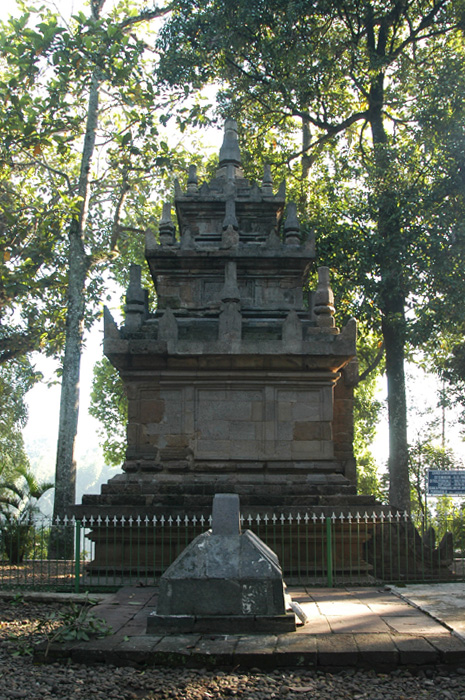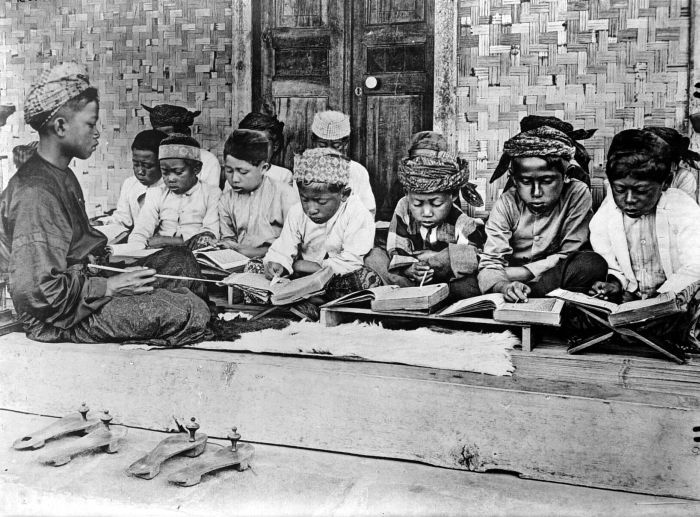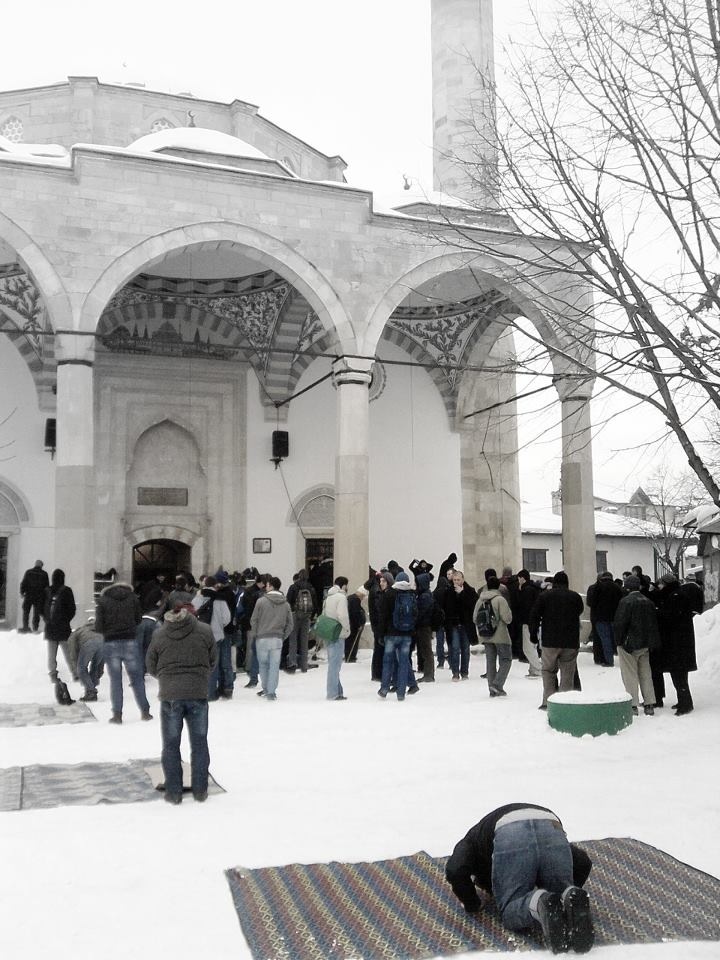|
Great Mosque Of Garut
The Great Mosque of Garut is a historical congregational mosque in the city of Garut, Garut Regency, Indonesia. The mosque is one of the oldest mosques in the region, first constructed on September 15, 1813 by the Dutch colonial representatives in the Priangan. The mosque was renovated three times in 1949, 1979, and 1998 into a traditional Javanese Islamic architectural style with sloped roofs.Kisah Masjid Agung dan Sejarah Garut ''Liputan6''. Retrieved March 30, 2021. Description Initial construction The regional capital of the Garut area was moved from Balubur Limbangan to the current area, and the Dutch colonial government initiated four infrastructure development plans, among which was the construction of the mosque. The Dutch constr ...[...More Info...] [...Related Items...] OR: [Wikipedia] [Google] [Baidu] |
Garut
Garut is a district and town in West Java of Indonesia, and the former capital of Garut Regency. It is located about 75 km to the southeast of the major city of Bandung. History The modern history of Garut started on March 2, 1811 when Balubur Limbangan Regency was dissolved by Governor General Herman Willem Daendels, because the area's production of coffee had decreased and the Regent, Tumenggung Wangsakusumah II had refused a command to plant indigo. Balubur Limbangan Regency then comprised 6 districts: Balubur, Malangbong, Wanaraja, Wanakerta, Cibeureum and Papandak. The Limbangan Regency, which has now become the Garut Regency, was founded by Lieutenant-Governor Stamford Raffles on 16 February 1813. RAA. Adiwijaya, who governed from the 1813 until 1821, was the first Regent of the Garut Regency. He was well known as Dalem Cipeujueh. The town of Suci was originally the capital of the new Limbangan Regency. However it was thought that Suci did not meet the requirements ... [...More Info...] [...Related Items...] OR: [Wikipedia] [Google] [Baidu] |
Pesantren
''Pesantren'', or ''pondok pesantren'', are Islamic boarding schools in Indonesia. They consist of pondok, mosque, santri, teaching of classical Islamic texts and Kyai.Zamakhsyari Dhofie''The Pesantren Tradition: A Study of the Role of the Kyai in the Maintenance of the Traditional Ideology of Islam in Java''Tempe, AZ: Arizona State University Program for Southeast Asian Studies Monograph Series. According to one popular tradition, the ''pesantren'' education system originated from traditional Javanese ''pondokan''; dormitories; ashram for Hindu or viharas for Buddhists to learn religious philosophies, martial arts and meditation. Institutions much like them are found across the Islamic world and are called ''pondok'' in Malaysia and Southern Thailand and '' madrasa Islamia'' (Islamic madrasa) in India and Pakistan and much of the Arabic-speaking world. The ''pesantren'' aim is to deepen knowledge of the Qurʾān, particularly through the study of Arabic, traditions of exegesis, ... [...More Info...] [...Related Items...] OR: [Wikipedia] [Google] [Baidu] |
Buildings And Structures In West Java
A building, or edifice, is an enclosed structure with a roof and walls standing more or less permanently in one place, such as a house or factory (although there's also portable buildings). Buildings come in a variety of sizes, shapes, and functions, and have been adapted throughout history for a wide number of factors, from building materials available, to weather conditions, land prices, ground conditions, specific uses, prestige, and aesthetic reasons. To better understand the term ''building'' compare the list of nonbuilding structures. Buildings serve several societal needs – primarily as shelter from weather, security, living space, privacy, to store belongings, and to comfortably live and work. A building as a shelter represents a physical division of the human habitat (a place of comfort and safety) and the ''outside'' (a place that at times may be harsh and harmful). Ever since the first cave paintings, buildings have also become objects or canvasses of much artistic ... [...More Info...] [...Related Items...] OR: [Wikipedia] [Google] [Baidu] |
Tajwid
In the context of the recitation of the Quran, ''tajwīd'' ( ar, تجويد ', , ' elocution') is a set of rules for the correct pronunciation of the letters with all their qualities and applying the various traditional methods of recitation (''Qira'at''). In Arabic, the term ''tajwīd'' is derived from the verb جود (), from the triliteral root ''()'', meaning enhancement or to make something excellent. Technically, it means giving every letter its right in reciting the Qur'an. or the science of in Islam is a science by which one learns the pronunciation of Qur’anic words as pronounced by the Islamic prophet Muhammad. The beginning of the science of was when the Islamic state expanded in the third century of Hijra, where error and melody increased in the Qur’an due to the entry of many non-Arabs to Islam. So the scholars of the Qur’an began to write the rules and rules of intonation. It is said that the first person to collect the science of in his book was (774 ... [...More Info...] [...Related Items...] OR: [Wikipedia] [Google] [Baidu] |
Ramadan
, type = islam , longtype = Religious , image = Ramadan montage.jpg , caption=From top, left to right: A crescent moon over Sarıçam, Turkey, marking the beginning of the Islamic month of Ramadan. Ramadan Quran reading in Bandar Torkaman, Iran. Community Iftar meal in Dubai, United Arab Emirates, Tarawah prayers in a mosque in West Sumatra, Indonesia. Foods served at a traditional Iftar meal. Ramadan decorations in Jerusalem. Zakat donation boxes in Taipei, Taiwan. , official_name = , observedby = Muslims , begins = At the last night of the month of Sha'ban , ends = At the last night of the month of Ramadan , date = Variable (follows the Islamic lunar calendar) , date2022 = 2 April – 2 May , celebrations = Community iftars and Community prayers , observances = * Sawm (fasting) * Zakat and sadaqah (alms giving) * Commemorating Qadr Night * Reading the Quran * Abstaining from all bad deeds and staying humble * Taraweeh prayer (Sunni Muslims) , relatedto = Eid al-F ... [...More Info...] [...Related Items...] OR: [Wikipedia] [Google] [Baidu] |
Qibla
The qibla ( ar, قِبْلَة, links=no, lit=direction, translit=qiblah) is the direction towards the Kaaba in the Sacred Mosque in Mecca, which is used by Muslims in various religious contexts, particularly the direction of prayer for the salah. In Islam, the Kaaba is believed to be a sacred site built by prophets Abraham and Ishmael, and that its use as the qibla was ordained by Allah in several verses of the Quran revealed to Muhammad in the second Hijri year. Prior to this revelation, Muhammad and his followers in Medina faced Jerusalem for prayers. Most mosques contain a '' mihrab'' (a wall niche) that indicates the direction of the qibla. The qibla is also the direction for entering the ''ihram'' (sacred state for the hajj pilgrimage); the direction to which animals are turned during ''dhabihah'' (Islamic slaughter); the recommended direction to make ''dua'' (supplications); the direction to avoid when relieving oneself or spitting; and the direction to which the deceas ... [...More Info...] [...Related Items...] OR: [Wikipedia] [Google] [Baidu] |
Bandung Institute Of Technology
The Bandung Institute of Technology ( id, Institut Teknologi Bandung, abbreviated as ITB) is a national research university located in Bandung, Indonesia. Since its establishment in 1920, ITB has been consistently recognized as Indonesia's premier STEM-based academic institution and reserves its place among the country's top elite universities. It has produced many notable leaders in science, engineering, politics, business, academia, and culture. ITB is ranked 235th internationally according to QS World University Rankings, and ranked 67th in QS Asian University Rankings. Domestically, the university is ranked 2nd by QS World University Rankings and ranked 3rd by Times Higher Education. ITB has the highest score threshold in Indonesia's national state university entrance test in science and technology. To this day, its engineering faculties are known to be the toughest to be admitted into. History Bandung Institute of Technology traces its origin to the Technische Hoogescho ... [...More Info...] [...Related Items...] OR: [Wikipedia] [Google] [Baidu] |
Ridwan Kamil
Mochamad Ridwan Kamil (born 4 October 1971) is an Indonesian architect and politician who is the 15th Governor of West Java, the most populous province of Indonesia. He was also the mayor of Bandung from 2013 to 2018. As an architect, he designed iconic structures in Indonesia and other countries in Asia with his Urbane architectural firm and lectured at the Department of Architecture, Bandung Institute of Technology. Education Kamil spent almost his entire life in Bandung where he went to public schools and studied architecture at Indonesia's leading state engineering school, the Bandung Institute of Technology. After obtaining his college degree, he went to the United States to apprentice at architectural firms before winning a scholarship in 1999 to study at the College of Environmental Design, University of California, Berkeley in the United States. He graduated in 2001 with a Master of Urban Design degree and work experience at a Berkeley government department. He obtained ... [...More Info...] [...Related Items...] OR: [Wikipedia] [Google] [Baidu] |
Central Java
Central Java ( id, Jawa Tengah) is a province of Indonesia, located in the middle of the island of Java. Its administrative capital is Semarang. It is bordered by West Java in the west, the Indian Ocean and the Special Region of Yogyakarta in the south, East Java in the east, and the Java Sea in the north. It has a total area of 32,800.69 km2, with a population of 36,516,035 at the 2020 Census making it the third-most populous province in both Java and Indonesia after West Java and East Java. The official estimate as at mid 2021 was 36,742,501.Badan Pusat Statistik, Jakarta, 2022. The province also includes the island of Nusakambangan in the south (close to the border of West Java), and the Karimun Jawa Islands in the Java Sea. Central Java is also a cultural concept that includes the Yogyakarta Special Region, in turn including the city of Yogyakarta; however, administratively that city and its surrounding regencies have formed a separate special region (equivalent to ... [...More Info...] [...Related Items...] OR: [Wikipedia] [Google] [Baidu] |
Eid Prayer
Eid prayers, also referred to as Salat al-Eid ( ar, صلاة العيد), are holy holiday prayers in the Islamic tradition. The literal translation of the word "Eid" in Arabic is "festival" or "feast" and is a time when Muslims congregate with family and the larger Muslim community to celebrate. There are generally two central Eids that take place in accordance with the Islamic lunar calendar (hence the additional name Șālat al-’Īdayn ( ar, صلاة العيدين "Prayer of the Two Eids"): * Eid al-Fitr ( ar, عيد الفطر, links=no), also known as the "Smaller Eid" is a celebration marking the end Ramadan, the Islamic holy month of fasting, welcoming the new month of Shawwal and lasts for a period of three days. Mandatory charity, or Zakat, specifically Zakat al-Fitr (Zakat of Eid Al-Fitr) is offered to the poor by every financially-able Muslim (preferably prior to the offering of the prayer) to ensure that those who are less fortunate may also participate in th ... [...More Info...] [...Related Items...] OR: [Wikipedia] [Google] [Baidu] |
Friday Prayer
In Islam, Friday prayer or Congregational prayer ( ar, صَلَاة ٱلْجُمُعَة, ') is a prayer ('' ṣalāt'') that Muslims hold every Friday, after noon instead of the Zuhr prayer. Muslims ordinarily pray five times each day according to the sun's sky path regardless of time zones. ''Jumu’ah'' means Friday in the Arabic language. In many Muslim countries, the weekend is inclusive of Fridays, while in others, Fridays are half-days for schools and some workplaces. Meaning It is one of the most exalted Islamic rituals and one of its confirmed obligatory acts. Obligation There is consensus among Muslims regarding the Friday prayer (''salat al-jum‘ah'') being ''wajib'' - required - in accordance with the Quranic verse, as well as the many traditions narrated both by Shi’i and Sunni sources. According to the majority of Sunni schools and some Shiite jurists, Friday prayer is a religious obligation, but their differences were based on whether its obligation is condit ... [...More Info...] [...Related Items...] OR: [Wikipedia] [Google] [Baidu] |
Salah
(, plural , romanized: or Old Arabic ͡sˤaˈloːh, ( or Old Arabic ͡sˤaˈloːtʰin construct state) ), also known as ( fa, نماز) and also spelled , are prayers performed by Muslims. Facing the , the direction of the Kaaba with respect to those praying, Muslims pray first standing and later kneeling or sitting on the ground, reciting prescribed prayers and phrases from the Quran as they bow and prostrate themselves in between. is composed of prescribed repetitive cycles of bows and prostrations, called ( ). The number of s, also known as units of prayer, varies from prayer to prayer. Ritual purity and are prerequisites for performing the prayers. The daily obligatory prayers collectively form the second of the five pillars in Islam, observed three or five times (the latter being the majority) every day at prescribed times. These are usually (observed at dawn), (observed at noon), (observed late in the afternoon), (observed after sunset), and (observed ... [...More Info...] [...Related Items...] OR: [Wikipedia] [Google] [Baidu] |








